Sioux Falls Childcare Collaborative shares in-depth look at childcare crisis, possible solutions
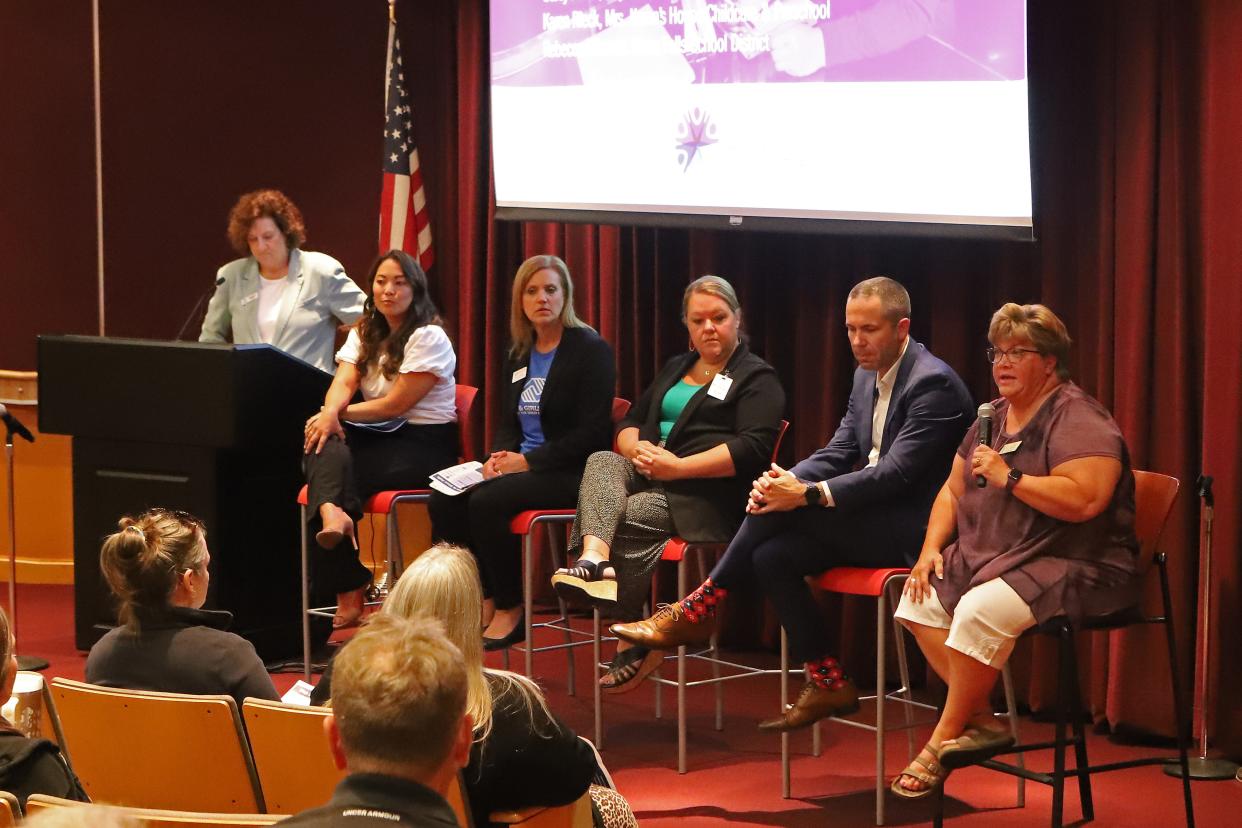
The Sioux Falls Childcare Collaborative presented its findings from an eight month study relating to the childcare crisis in the city and shared possible solutions from the Childcare Initiative Leaders on Monday night.
The Childcare Collaborative, which is facilitated by Sioux Falls Thrive, started in 2017 with a small group of people. In 2021, they really began ramping up to learn more about the childcare crisis and find ways to navigate it. Now there are over 25 collaborative partners and 90 individuals involved.
The event Monday night included a panel of speakers from the Collaborative who are either childcare professionals or employers in the community.
More: 'We're in a crisis,' childcare leaders warn as options remain unaffordable for many
Last October, the Collaborative created an initiative, led by coordinators Nicole Fluth and Rana DeBoer, to develop a strategy for easing the local crisis. They spent eight months meeting with community leaders, business owners and families to see what solutions would have the most impact.
At Monday night's event, Mayor Paul TenHaken said Sioux Falls has an unemployment rate at around 1.7%, which isn’t a bad thing, but it means there are thousands of open jobs.
TenHaken said part of that is because since the pandemic, more people have found they can work remotely, so even though over 6,000 people a year are moving to the city, not all of them are joining the workforce.
But the number one reason why those jobs are empty, he said, is because more people are having to stay home because of the cost and availability of childcare.
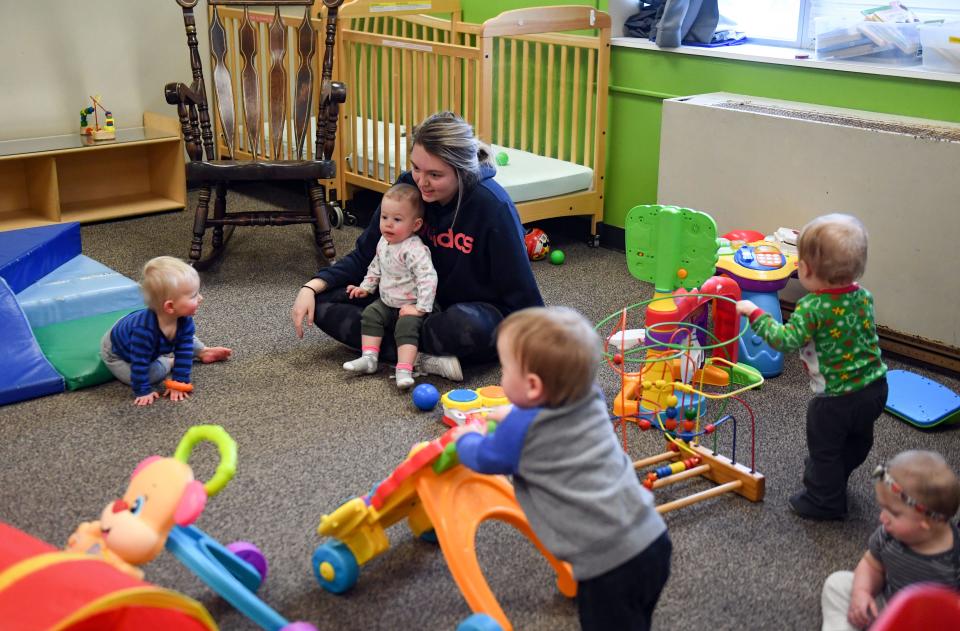
Childcare is nowhere near 'affordable'
According to Thrive's 2023 report, 60% of non-working parents say childcare is the top reason they don't participate in the workforce. For many, it is a numbers game to see which is more economical, and often neither option is great.
EmBe CEO Kerri Tietgen used an example Monday night of “Joe and Susie,” and how both parents can make $45,000 a year, but with two little children, it is not sustainable to keep up with the costs of childcare, which averages $11,385 per year per child. This means 25% of their total income is going toward childcare.
According to the U.S. Department of Health and Human Services, affordable childcare should cost no more than 7% of a family's income. In Sioux Falls, the median household income is only $66,761, which means childcare for two children costs 34%. A family with one child would need to make $163,429 to "afford" childcare at the current tuition rates.
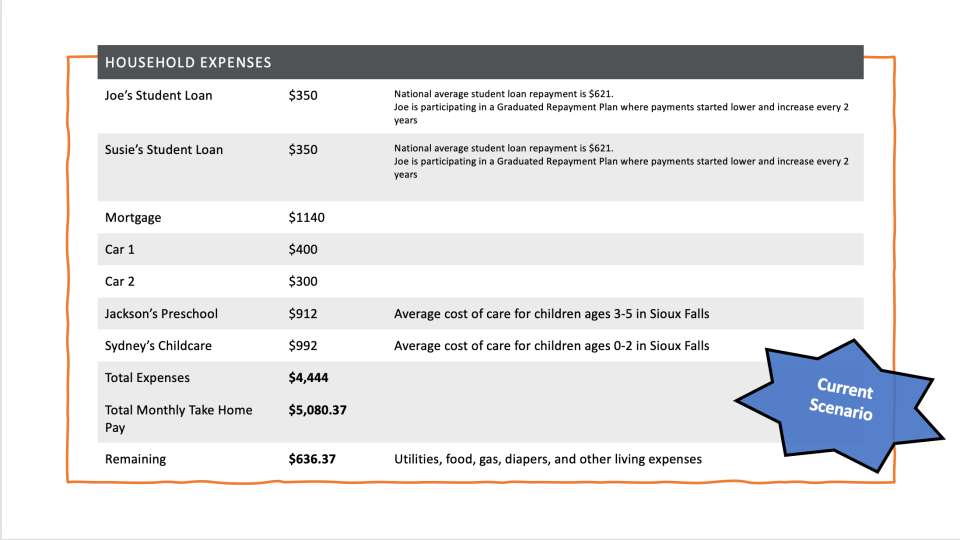
For Joe and Susie, that would mean childcare should cost total of $6,300, instead of the $22,770 it is. On top of other daily expenses and things like a mortgage, student loans and car payments, Joe and Susie are left with little to no money for anything else.
“Staying home is not an option for Joe and Susie, nor is going to work,” Tietgen said. “This is the crisis at hand.”
More: Study reveals $636M affordability gap for childcare in South Dakota and Sioux Falls
Sioux Falls working parents needing more flexibility
Julie Becker, the director of the St. Francis House, told the Argus Leader that as an employer, she sees how challenging the childcare crisis is for her employees.
"I run a different type of business than some, since the facility runs 24 hours a day, seven days a week," she said. "I've had a ton of individuals willing to work the overnight shift so that their spouse can work the day shift. Then when they get off in the morning, they switch off with their partner. That's how they're managing."
Becker said not having a lot of evening childcare options is another obstacle working parents face.
More: In-home daycare numbers in Sioux Falls continue to decline, worsening childcare crisis
Some of the staff with school-aged children have had struggled getting kids into programming, she said, so the parents have to use up their paid time off to cover when they need to take care of their child. Becker said this winter was particularly rough with all the snow days and many of her employees needed that flexibility.
There have even been times, on occasion, when employees have had to bring their children to work for a period of time just so they can save their PTO for those days when there won't be childcare.
"That's why I've been so supportive of this initiative, because we have to do more," Becker said. "Everybody can complain that they don't have workforce, but what are you doing to help deal with these obstacles? I'm glad we're having this conversation."
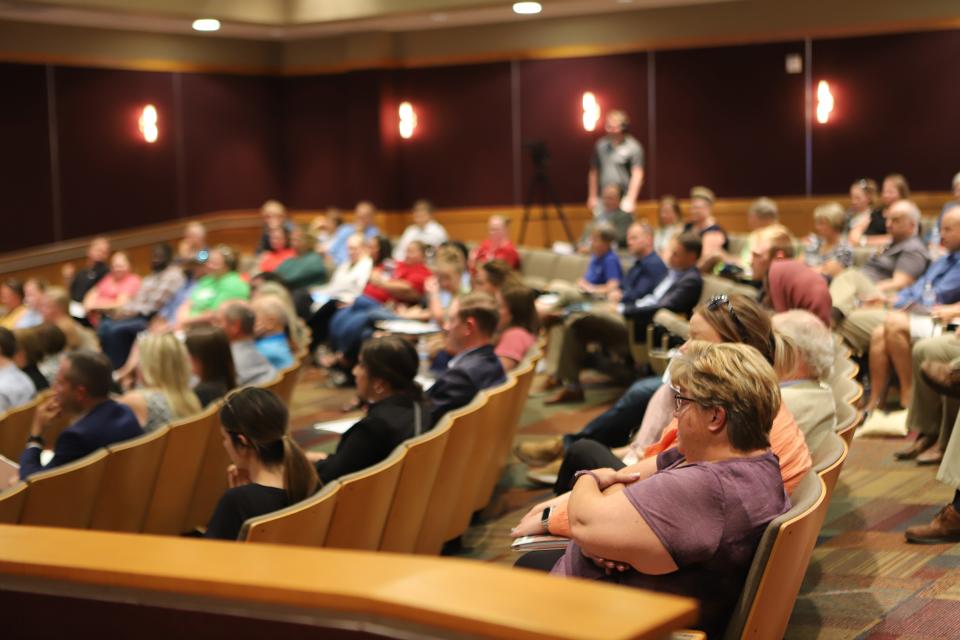
Childcare industry also dealing with worker shortage
But the workforce issue is also affecting the childcare industry specifically.
Kassidi Smith, chief operations officer at the Boys & Girls Club, told the Argus Leader there's been an ongoing shortage of childcare workers. In Sioux Falls, 75% of childcare centers are looking for help, and 64% of centers aren’t able to operate at full capacity with the number of children they take in.
"The main reason is we can't afford to pay our childcare workers competitive wages because our source of revenue is family tuition," Smith said, adding the mean hourly wage for childcare workers sits just over $12.
More: DSS proposed rules would change child care provider ratios and training hours
"In order to pay our staff a competitive wage, we would have to continue raising rates that are already unaffordable. So that's where our problem lies. We want to be able to pay our staff what they deserve, but we don't want to hurt the families."
What can be done to ease the childcare shortage?
DeBoer and Fluth have spent the last eight months intensely looking at the issue while generating tangible solutions that can help ease it.
"We have an incredible opportunity to start treating childcare as infrastructure, making it a priority just as we do streets and sewers," DeBoer said. "Because if our working parents can't get to work, our businesses can't run the economy slows....We have to change the narrative a little bit to ... really understand what does childcare mean."
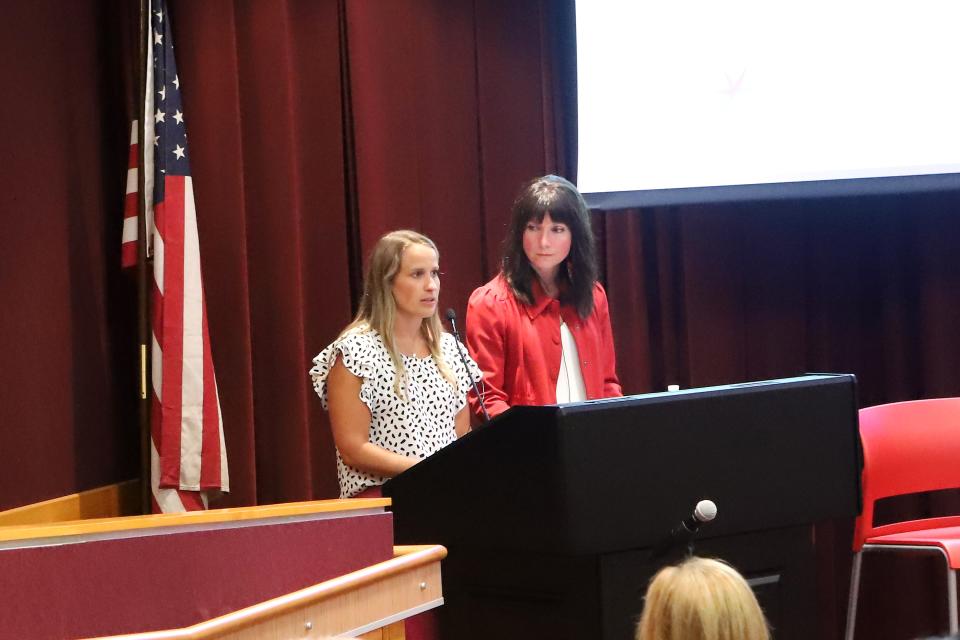
They produced a full 97-page report that covers the research and recommendations, while also creating a 50-page employer toolkit for leaders and business owners to learn how to support working parents at their organizations.
There are multiple recommendations for each the community, business and state levels. Here is an overview of the ideas DeBoer and Fluth created at each level.
Community/local level
Create an office of child and youth development
This would include a paid coordinator position who would convene an advisory council and stakeholder committees
Initiatives should include receiving an Early Learning Community (ELC) accreditation and Best Place for Working Parents designation, creating a local education and advocacy campaign, and being an information and data analytics hub.
Increase pathways to the profession
Includes creating a high school dual credit program, developing internship and on-the-job trainings, and expanding the Build Dakota Scholarship
Partnership with Startup Ecosystem + Startup Sioux Falls for those wanting to start in-home daycares
Create a Family Scholarship fund
Providing subsidies for families that fall through the cracks and earn between 209-350% of the Federal Poverty Level
Create business incentive grants
Match funds of businesses that invest in childcare by securing additional childcare slots, building facilities or providing stipends for employees
Provide additional funding to the Helpline Center to improve their efficiency and capability
State level
Create a statewide childcare task force
Create business incentive grants at the state level
Revamp Childcare Assistance (CCA)
Includes allocating annual state funding to CCA program, changing reimbursement to enrollment based, set better rates, and improve accessibility by making it applications mobile-friendly
Create a wage parity system so early learning professions are on a comparable wage scale with K-12 teachers
Business level
Create a family-friendly business movement
This would include creating an awareness campaign, contracting with third-party companies to assist employees with childcare, and educating employees on local childcare resources and the Child & Dependent Care Tax Credit.
Offer employer-paid childcare assistance
More: From daycares to stipends, what South Dakota businesses are doing to help with childcare
There are several other solutions at each level that were included in the report, but these were the ones Fluth and DeBoer deemed "most impactful."
"Two things that are important. One: this is not the end, this is just the continuation of an ongoing conversation," Sioux Falls Thrive President Michelle Erpenbach said. "And that final word is collaboration, that we're all going to have to do this together. It really is about all of us holding our own community together and forging ahead to the future."
More information or details regarding the report or to view more childcare statistics, visit Sioux Falls Thrive online.
This article originally appeared on Sioux Falls Argus Leader: New childcare crisis solutions recommended in Sioux Falls

